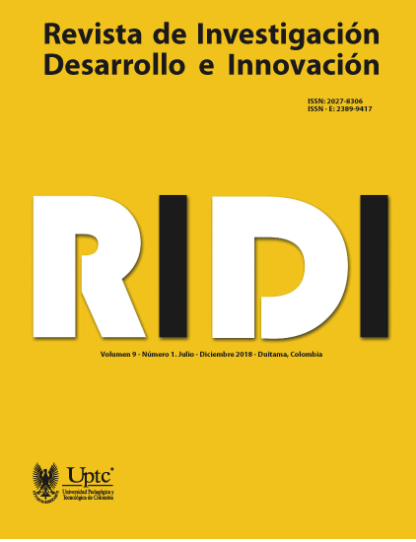The human computer interaction in the curricula of Colombian higher educative institutions

Abstract
The article addresses the current state of the inclusion of subjects related to the Human Computer Interaction, HCI, in the curricula of Higher Education Institutions, HEI, of Colombia. The research methodology had an exploratory and descriptive scope, besides having a quantitative cut. The research contemplated the 497 active HEI as a target population to April 2017. The results highlight that at least 137 HEI offer core programs of Computers Engineering, Telematics and related topics, which according to the National Information System of Superior Education, SNIES, group the institutions that offer training programs in the computing field. The latter ones, only 28.47% offer 42 subjects related to the HCI. In addition, of all the graduates in 2015 from careers of this group, at least 4.36% of them could have knowledge of the discipline. This allows us to conclude that the skills or competences in the field of the HCI, in the professional profiles of Colombian graduates, are minimal in terms of this topic.
Keywords
human computer interaction; HCI; higher education institutions; computers engineering; software engineering.
Author Biography
Carlos Andrés Riascos-Pareja
Estudiante de Ingeniería de Sistemas
Álvaro Andrés Loaiza-Duque
Estudiante de Ingeniería de Sistemas
Royer David Estrada-Esponda
Ingeniero de Sistemas, Magíster en Administración
References
- Abreu, J. (2012). Hipótesis, Método & Diseño de Investigación. Daena: International Journal of Good Conscience, 7(2), pp. 187-197. ISSN 1870-557X
- Alarcón, H.F., Hurtado, A.M., Pardo, C., Collazos, C.A., y Pino, F.J. (2007). Integración de técnicas de usabilidad y accesibilidad en el proceso de desarrollo de software de las MiPyMEs. Avances en Sistemas e Informática, 4(3). pp. 159-166
- Azcona, M., Dorati, J. y Manzini, F. (2013). Precisiones metodológicas sobre la unidad de análisis y la unidad de observación. IV Congreso Internacional de Investigación de la Facultad de Psicología de la Universidad Nacional de La Plata. La Plata, Argentina
- Cazau, P. (2006). Introducción a la Investigación en Ciencias Sociales. Tercera ed. Buenos Aires, Argentina
- Collazos, C.A., Ortega, M., Granollers, T., Rusu, C. y Gutierrez, F.L. (2016). Human-Computer Interaction in Ibero-America: Academic, Research, and Professional Issues. IT Professional, 18(2), pp. 8-11. DOI: 10.1109/MITP.2016.38 DOI: https://doi.org/10.1109/MITP.2016.38
- Collazos, C.A., y Merchan, L. (2015). Human-computer interaction in Colombia: bridging the gap between education and industry. IT Professional, 17(1), pp. 5-9. DOI: 10.1109/MITP.2015.8 DOI: https://doi.org/10.1109/MITP.2015.8
- Ferreras, B. y Jacquelín, H. (2008). Aplicación de la usabilidad al proceso de desarrollo de páginas web (Doctoral dissertation, Informatica). pp. 11 Recuperado de: http://oa.upm.es/1176/
- Granollers, T., Collazos, C.A. y González, M.P. (2008). The State of HCI in Ibero-American countries. Journal of Universal Computer Science, 14(6), pp. 2599-2613. DOI: jucs-014-16-2599
- Granollers, T., Lorés. J. y Cañas. J. (2005). Diseño de sistemas interactivos centrados en el usuarios. Editorial UOC. ISBN: 84-9788-320-9
- Granollers, T. (2004). MPIU+a: Una metodología que integra la ingeniería del software, la interacción persona-ordenador y la accesibilidad en el contexto de equipos de desarrollo multidisciplinares. Universidad de Lleida
- ISO25000. (2011). ISO/IEC 25010. Extraído de: http://iso25000.com/index.php/normas-iso-25000/iso-25010
- Marco-Simó, J.M, Guitart, I y Marco-Galindo, M.J. (2008). ¿Podemos darle la vuelta a la enseñanza del desarrollo del software? Novatica: revista de la Asociación de Técnicos de Informática. Vol.193, pp. 59-62. ISSN: 0211-2124
- Marco-Simó, J. M, Marco-Galindo, M. J. y Terrén, D. (2015). Casi le damos la vuelta a la enseñanza del desarrollo de software. En: XXI Jornadas sobre la Enseñanza Universitaria de la Informática, pp. 341-349. ISBN: 978-99920-70-10-9
- Pressman, R. (2010). Ingeniería del Software. Un enfoque práctico. 7th ed. Ciudad de México, México: McGRAW-HILL, pp.339-345. ISBN: 978-607-15-0314-5
- Project Smart. (2014). Chaos Report. Recuperado de: https://www.projectsmart.co.uk/white-papers/chaos-report.pdf
- SNIES. (2017). Observatorio laboral para la educación. Extraído de:http://www.mineducacion.gov.co/sistemasdeinformacion/1735/w3-article-212301.html
- Villegas, M.L., Giraldo, W.J., Granollers, T., y Collazos, C.A. (2007). Una propuesta de inclusión del área de Usabilidad en la estructura curricular en Colombia. Congreso Internacional de Interacción Persona-Ordenador. Zaragoza, España. pp. 193-202. ISBN 978-84-9732-596-7